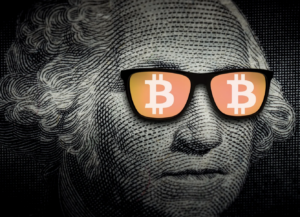The upcoming halving event in the world of cryptocurrency has been causing quite a stir among investors and enthusiasts alike. Scheduled to take place in April, this phenomenon is expected to have a significant impact on the price of bitcoin, the most popular virtual currency in the market.
For those unfamiliar with the term, “halving” refers to the process by which the rewards earned by bitcoin miners for validating transactions are cut in half. This reduction in mining rewards leads to a decrease in the supply of new bitcoins entering the market, ultimately driving up the price of the digital currency. Experts predict that the upcoming halving event could result in a surge in the value of bitcoin, making it a potentially lucrative investment opportunity for those willing to take the risk.
As the halving event draws closer, investors are closely monitoring the price movements of bitcoin, hoping to capitalize on any potential gains. The anticipation surrounding this event has led to a significant increase in the value of bitcoin, with the cryptocurrency recently hitting a new all-time high of around US$68,000. This impressive price increase comes on the heels of a 60% gain in the currency’s value in the first half of the year, further fueling speculation among investors.
Bernardo Srur, the director-president of the Brazilian Cryptoeconomics Association (ABcripto), has highlighted the significance of the halving event and its impact on the price of bitcoin. He pointed out that previous halving events have led to a substantial increase in the value of the cryptocurrency, prompting investors to eagerly await the next halving in hopes of reaping significant returns.
With a limited supply of 21 million bitcoins programmed into the currency, the upcoming halving event will further reduce the number of new bitcoins entering circulation. Currently, there are approximately 19.5 million bitcoins in existence, with the final bitcoin predicted to be created by the year 2140. This scarcity of supply, coupled with the increasing demand for bitcoin, is expected to drive up its price in the coming months.
The reduction in mining rewards as a result of the halving event will encourage investors to hold onto their bitcoins in anticipation of a potential price increase. This restriction on the availability of new bitcoins will create a sense of scarcity, further fueling the demand for the cryptocurrency. At the same time, the recent recognition of bitcoin Exchange Traded Funds (ETFs) by regulatory authorities has made it easier for investors to gain exposure to bitcoin without directly owning the digital currency.
While the halving event presents an exciting opportunity for investors to capitalize on the potential price surge of bitcoin, experts advise caution and restraint. The cryptocurrency market is notoriously volatile, with prices often influenced by external factors and macroeconomic events beyond the control of investors. As such, it is essential for investors to approach the market with a level head and realistic expectations, as price movements can be unpredictable and difficult to forecast.
As the world of cryptocurrency continues to evolve and gain mainstream acceptance, bitcoin is increasingly becoming a force to be reckoned with in the global economy. With its limited supply, decentralized nature, and growing institutional interest, bitcoin is poised to play a significant role in shaping the future of finance and investment.
In conclusion, the upcoming halving event in April is expected to have a profound impact on the price of bitcoin, with experts predicting a surge in value as a result of reduced mining rewards. While the potential for significant gains may be enticing, investors are advised to exercise caution and prudence when navigating the volatile cryptocurrency market. By staying informed, exercising due diligence, and managing risk effectively, investors can position themselves to potentially profit from the evolving landscape of digital assets and blockchain technology.






